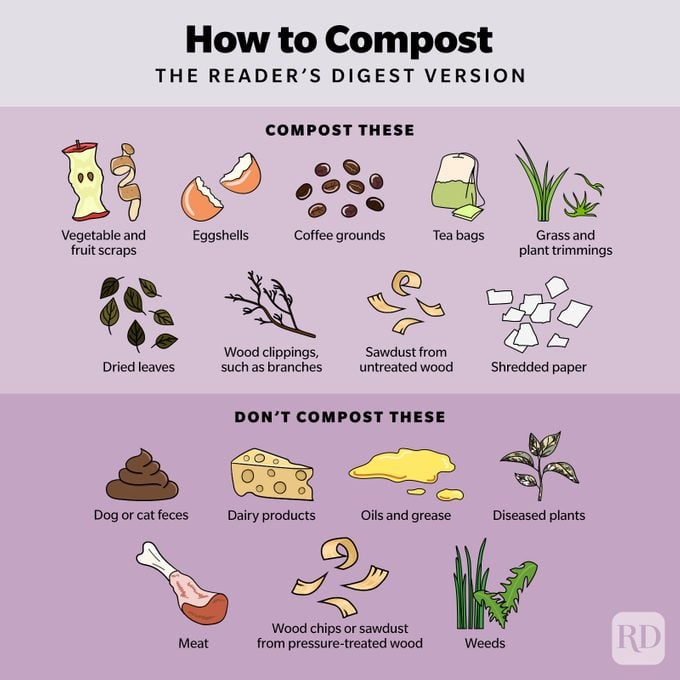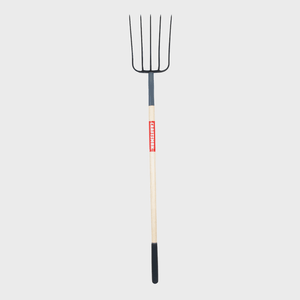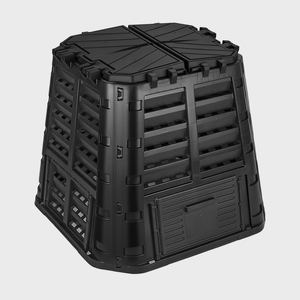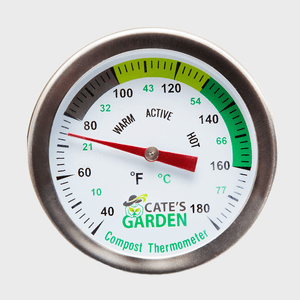How to Make Compost at Home to Enrich Your Garden
Updated: May 25, 2023

Here's everything you need to know about how to make compost at home.
If it feels like everyone’s learning how to compost these days, it’s because many are jumping on this simple act as one way to help the environment and ease their climate anxiety. Like using reusable straws and water bottles, composting is a small step that makes a big environmental impact.
“When you recycle your organic materials, like coffee grounds, banana peels, yard trimmings, and compostable food-service ware, you are saving valuable resources from going to waste in a landfill,” says Erin Levine, a certified composting professional and resource recovery manager at World Centric, a leading compostable tableware company. Minimizing the number of natural resources that can be reused and repurposed instead of tossed into landfills is important for the environment and the climate, beneficial for your plants, and good for your wallet.
However complex it may sound, compost is really just organic materials in the process of being degraded into bioavailable nutrients for plants. And it’s important for the health of your soil. “When we harvest, trim, or clean up organic debris from the garden, we are removing nutrients that have been pulled from the soil system,” explains Shannie McCabe, horticulturist with Baker Seeds. Making your own compost creates a closed-loop system by putting nutrients back into the soil. And as an added bonus, it’ll save you money because you don’t have to buy your own compost or plant food.
If you’re worried that learning how to compost is tough, don’t be. It’s a straightforward process, and when it’s finished, you’ll have organic matter to give a boost of nutrients to the soil. Composting is an important aspect of sustainable living and growing sustainable food. So if you want to be more eco-friendly and reduce the food waste that ends up in landfills and produces greenhouse gas, pick up one of these compost bins and learn how to compost.
What is composting?
Composting is the process of layering kitchen scraps and yard and plant waste to create a natural amendment to add to the soil of your garden. When it’s complete, compost is rich in organic matter that is beneficial for the soil. “[Compost] may look humble, like a pile of brown and crumbly dirt, but compost is a mix of broken-down organic materials as well as beneficial microorganisms, [and] it is very useful to the health of our plants,” says McCabe.
Why you should be composting
According to the Environmental Protection Agency, food scraps and yard waste make up more than 30 percent of what we toss in the trash. From there, they head to landfills, where they take up space and release the greenhouse gas known as methane. By composting, we keep them out of landfills and do our part to fight climate change.
If that’s not reason enough to start composting, consider this: For the sake of the Earth’s future, it’s imperative that we take care of such finite natural resources as water and soil. Plants take nutrients from the soil during the growing cycle, and if nutrients aren’t incorporated back, the soil will eventually be depleted, making it difficult for a successful harvest the next season.
“If we continually take from the soil and don’t give anything back in the form of nutrients, we end up with deficient soils on a macronutrient and micronutrient level,” says McCabe. And not only is compost important for the soil, but it can also reduce water consumption. “Compost is known to retain moisture in the soil, decreasing the need for excessive water,” explains Levine. “Another huge benefit is that it helps draw down carbon dioxide from the atmosphere and lock it in the soil, helping to combat climate change.”
The benefits of composting
“Composting is an easy and cost-effective way to reduce your carbon footprint,” says Levine. “It positively contributes to a closed-loop food system.”
You already learned that composting your food scraps and yard debris prevents food trash from heading to landfills and minimizes methane emissions and pollution. That’s the benefit of composting on a global scale. But what is compost good for in your garden? For starters, it adds and maintains nutrients in the soil. “Recycling your food scraps and making a soil that can grow more food is the ideal circular economy model. Plus, it stays local,” says Levine.
If you’re not sure you’re up to the task of learning how to compost, see if your city collects food scraps. It’s another way to divert food waste from landfills. “Everyone should consider contributing to their curbside collection program or making their own compost,” says Levine.
But there’s one benefit most people have a hard time arguing against: It saves money on fertilizers.

What you can compost
By now, you’re probably ready to google “what can and can’t you compost” so you can get started on your green-living plans. We’ll save you the search; we have all the need-to-know information right here.
A variety of foods can go into your compost pile, from rotting veggies to eggshells and coffee grounds. To create a successful compost pile, you need to have a mix of ingredients that provide carbon and nitrogen as well as water and air to help with the breakdown.
“Browns” are typically dried or dead plant materials that serve as a source of carbon. “Greens” are fresh plant materials (and sources of nitrogen) like grass clippings and fresh kitchen scraps, such as banana and potato peels, onion skins, coffee grounds, eggshells, and tea bags, explains McCabe.
Browns:
- Dried leaves
- Wood clippings, such as branches
- Shredded paper, including cereal boxes, cardboard, and newspaper
- Sawdust (but only if from untreated wood)
Greens:
- Vegetable and fruit scraps
- Eggshells
- Coffee grounds
- Tea bags
- Grass and plant trimmings
What can’t be composted
Some food items are better left out of the compost bin. “Most organic materials are indeed compostable […] but there are a few ingredients that you should not add to your compost pile. These are things that might attract animals or will actually negatively affect the breakdown of the pile,” says McCabe.
Keep these out of your compost pile:
- Meat
- Dairy products
- Oils and grease
- Diseased plant materials
- Weeds, such as Bermuda grass or any weeds that can reseed
- Wood chips or sawdust from pressure-treated wood
- Dog or cat feces
So what exactly should you do with those diseased plants? “If you have insect- or disease-affected plants, do not compost them,” McCabe says. “Instead, opt to burn them.”
Ashley Labrecque, a soil scientist who teaches gardening through the Gardening in Canada website and YouTube channel, says limiting the number of weeds placed in the compost will prevent the spread of weeds in the following years.
And while shredded paper is A-OK, you’ll want to toss things like cardboard boxes and packing material in the recycling bin.
Where to store compost
Anyone who’s ever looked into how to compost at home has wondered some version of this question: Where on earth do I stash all my scraps? Considering these are materials you’d otherwise toss in the trash, you might be hesitant to store them indoors. But don’t be. You can collect kitchen food scraps in a small pail under the sink, on the countertop, or even in the freezer for easy access before placing them in a compost bin.
While you can keep your compost bin inside, that’s not the ideal option. A compost pile requires turning as well as sufficient airflow and water for decomposition, so keeping your compost bin outside is best. “Composting success depends on a good flow of oxygen, so regularly turning the piles as well as incorporating water is key and might be a bit messy to manage indoors,” says Levine.
How to make compost
1. Build your compost pile by layering browns and greens. You’ll be building your compost pile by topping a layer of browns with a layer of greens, repeating the process until you’ve used all your materials.
2. Water your compost pile. Once you’ve built your layered pile, water it. Watering your pile is essential for the breakdown of organic materials; it’s how they’re converted into compost. “You can hose the pile down or even set up a timed irrigation. Just be sure that the pile is getting watered,” says McCabe. One thing to note: You don’t want to overwater, as this can disturb (or kill) the microorganisms and bugs.
3. Turn your compost frequently. Turning your compost can be a weekly endeavor, but depending on your pile and your interests, you may want or need to turn it more often. “Each time you turn your compost, be sure to really disturb the pile, bringing the material from the bottom to the top,” McCabe says. You can flip over the compost using gardening tools like a digging fork, shovel, or spade. Some people may prefer to create their compost with a sturdy compost container or with an easy-to-turn bin. “Using a tumbler or a hayfork is hands down the best way,” says Labrecque.
4. Check the temperature. It’s important to check to see if the pile is reaching the necessary temperatures to break down. The best way to do this is by using a compost thermometer, says McCabe. Alternatively, you can check with your hands. “If you are brave enough to stick your bare hand in the center of the pile, it should feel quite hot,” she says.
5. Check to see if there are insects in the pile. “Healthy compost will be teeming with life, worms, and bugs galore,” says McCabe.
6. Do a sniff test. As you build your compost pile, pay attention to the scent. It shouldn’t be putrid. “Lack of smell, or an earthy smell, is important because it shows decomposition is taking place and not rotting,” says Labrecque.
You’ll know your compost is ready when it’s crumbly and brown. “When the compost starts to look dark, resembling soil with no distinguishable remnants, you can pick it up and put it to your nose. If it smells like the forest floor, it’s done,” says Levine. Now you’re ready to use it in your garden. Homegrown organic food, here you come.
FAQs on composting
Still have questions about how to compost? We’ve got answers.
How long does it take to compost?
The breaking down of plant and food materials takes time. Just how long it takes to turn into compost depends on whether you choose the hot or cold method.
“Hot composting requires an internal pile temperature of 120 to 170 [degrees] Fahrenheit,” says McCabe. “Using this method, you can have compost in as few as 10 to 12 weeks.”
Prepare to be more involved and turn your compost pile frequently. With this method, you won’t be adding new material to the pile until it’s done heating up and cooling down. Fresh material will just cool it down before it’s ready.
Another option is cold composting, and it’s a good option if you want to keep adding new material to the pile and are less concerned with speed. “You will have finished compost in about six to 12 months,” she says. “However, it is a more hands-off method, and the internal temperature need only be 90 [degrees] Fahrenheit.”
Why does my compost smell bad?
A foul smell coming off your compost pile is an indicator that it needs more air. “If the compost is stinky, it usually means the pile is lacking oxygen, and it needs to be turned. Introducing more air to your pile stimulates microbial activity,” explains Levine. “Additionally, you should add some leaves, sawdust, or woody-type material to the pile.”
What should I do if my compost is too wet?
A wet compost pile is in need of more carbon, which comes from browns. “If the pile is too wet, reduce the amount of water you are adding and consider incorporating food-soiled paper or other fibrous materials,” says Levine.
What should I do if my compost is too dry?
A dry compost pile usually indicates a need for nitrogen and greens. “If your compost is not heating up or remains cool, spray some water and add in grass clippings, food scraps, or flowers,” says Levine. “The greens will increase the moisture content.”
Can I just put compost on top of soil?
When the compost is finished, it’s time to add it to the soil. You can place the compost directly on top of the soil, add it around a plant to give it greater access to nutrients, or mix the compost into the soil before planting.
What does it mean if plants are growing in the compost bin?
“If plants are sprouting out of the compost bin, it likely means that weed seeds flew into the compost pile, and you should be tending to it by turning and watering it more regularly,” says Levine. When the compost pile is turned regularly (for the hot method), it should get hot enough that seeds aren’t able to grow. “If you are diligent about tending to your pile and ensuring it’s getting hot on the inside, the heat should kill off unwanted weed seeds that result in sprouting plants.”
Living sustainably
Now that you know how to compost, you can turn food scraps and yard debris into a rich amendment for your soil and plants while simultaneously reducing your trash and dependence on fossil fuels to transport it. Next, learn how to recycle just about anything and how to grow your own food.
Sources:
- Erin Levine, certified composting professional and resource recovery manager at World Centric
- Ashley Labrecque, soil scientist and gardener with Gardening in Canada
- Shannie McCabe, horticulturist with Baker Seeds
- Environmental Protection Agency: “Composting at Home”






